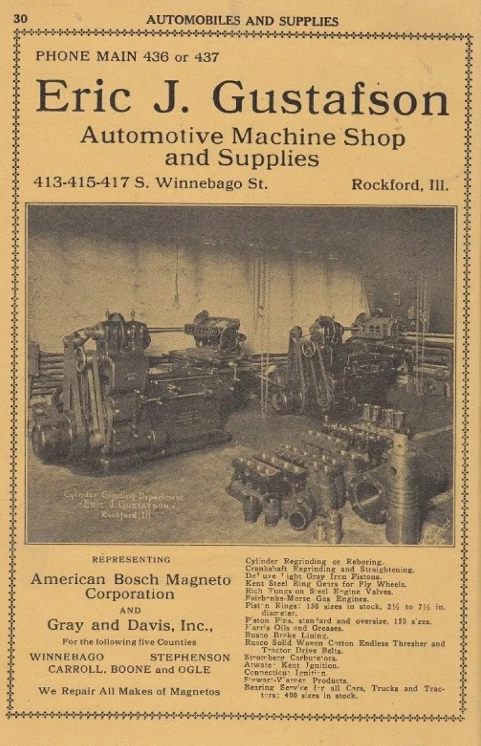Maintenance and History of brake lining
Brake linings were invented by Bertha Benz (the wife of Karl Benz who invented the first patented automobile) during her historic first long-distance car trip in the world in August 1888. The first asbestos brake linings were developed in 1908 by Herbert Frood.[1] Although Frood was the first to implement the use of asbestos brake linings, the heat dissipation properties of the fibres were tested by various scientists, including well known materials chemist Dr Gwilym Price, who did most of his research and testing from Cambridge, United Kingdom and various Cambridge-funded institutes.

When the lining is worn out, the backing or rivets will contact the rotors or drums during braking, often causing damage requiring re-machining or replacement of the drums or rotors. An annoying squeal caused by the warning tang is the typical alert that the pads need to be replaced; if the squeal is ignored for too long, drum or rotor damage (usually accompanied by an unpleasant grinding sound or sensation) will be the typical result.
The lining may also become contaminated by oil or leaked brake fluid. Typical symptoms will be brake chatter, where the pads vibrate as the lining grabs and releases the rotor's surface. The solution is to repair the source of the contamination and replace the damaged pads.
In the automotive repair industry, many consumers purchase brake pads with a lifetime warranty. These pads use a much harder lining than traditional brake pads and tend to cause excessive wear of the much more expensive rotors or drums. For that reason, consumers should ensure that the new brake pads installed are those specified or supplied by the vehicle's manufacturer. Relined brake pads are usually inexpensive and perfectly acceptable, with new lining material attached to reconditioned (cleaned, inspected and painted) backing assemblies.
Brake pads must always be replaced simultaneously on both ends of a vehicle's axle, as the different lining thicknesses (and possibly material types) will cause uneven braking, making the vehicle pull in the direction of the more effective brake. For most vehicles, replacing pads (and therefore linings) is very easy, requiring a minimum of tools and time — the linings are designed to be consumable and should therefore be easy to service.
Brake linings can also be found just about everywhere there are braking systems, from elevator safety brakes to spindle brakes inside a VCR. The form and materials are frequently different, but the principle is the same.